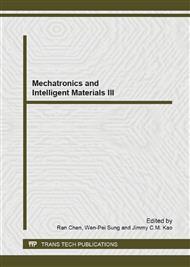[1]
Genevieve Palardy, Pascal Hubert, Eduardo Ruiz et,al. Numerical simulations for class A surface finish in resin transfer moulding process. Composites: Part B 43819-824(2012)
DOI: 10.1016/j.compositesb.2011.06.002
Google Scholar
[2]
Zhang Yulong, Li Changde, Wang Ximei, etc. High-tech Composites Manual [M].Beijing:National Defense Industry Press, 348~372(2003)
Google Scholar
[3]
Shan Zhongde, Liu Feng, Qiao Juanjuan, Qin Shaoyan, 3D Weaving Forming Technology and Equipment For Composites, Proceeding of the International Conference on Advanced Technology of Design and Manufacture 2011, Changzhou,IET PRESS,87-90(2011)
DOI: 10.1049/cp.2011.1051
Google Scholar
[4]
Wang Fang. Study on groove type VARTM forming technology [D].TianJin:Tianjin University of Technology.(2006)
Google Scholar
[5]
Trochu F, Gauvin R, Gao Dm. Numeriacal simulation of the resin transfer molding process by the finite element method. Adv Polym Tech12(4):329-42(1993)
DOI: 10.1002/adv.1993.060120401
Google Scholar
[6]
Gauvin R, Trochu F. Key issues in numerical simulation for liquid composite molding processes. Polym Composite:19(3):233-40(1998)
DOI: 10.1002/pc.10095
Google Scholar
[7]
Young W B. Effect of surface tension on tow impregnation of unidirectional fibrous perform in resin transfer moulding [J]. Journal of Composite Materials,30(11):1191~1209, (1996)
DOI: 10.1177/002199839603001102
Google Scholar
[8]
Qiu JingJing,Duan Yuexin, Liang Zhiyong, Computer simulation and actual experiments of RTM Mold-filling process affected by processing parameters, Acta Materiae Compositae Sinica,6(V21):70~74,(2004)
Google Scholar
[9]
Spoerre J, Zhang C, Wang B,et al. Integrated product and process design for resin transfer moulded parts[J]. Journal of Composite Materials,32(13);1244~1271,(1998)
DOI: 10.1177/002199839803201301
Google Scholar


